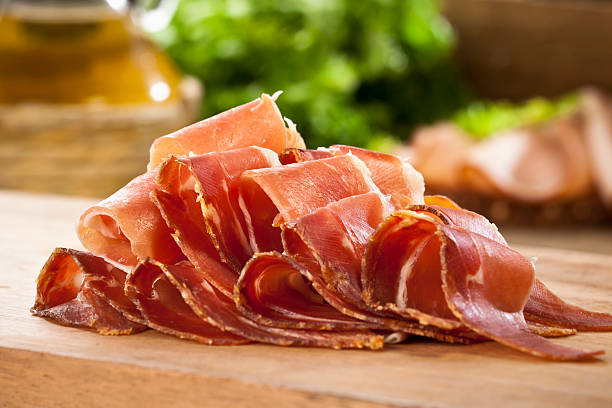Italian prosciutto
Since the time of ancient Rome and perhaps earlier, Italians have salted-cured meat, especially pork. You can find specialty food stores across the city that feature packages of shaved prosciutto and crudo and legs of cured prosciutto prominently displayed in their storefront windows. Stacks of Roman cheeses, bottles of olive oil, brined olives, and crusty bread are waiting to be made into a picnic as you peek through the door. To ensure the highest quality and authenticity, look for prosciutto from Parma, Modena, Toscana, and San Daniele, all of which have protected designations of origin (DOP) certification.
There are numerous varieties of cured meats from various countries, but Italian prosciutto is among the most well-known. Italians manufacture their famed prosciutto, which is coveted for its delicate sweet and salty flavors and considerable creamy marbling, using certain heritage hogs that are given similarly precise diets. Italian cuisine relies heavily on prosciutto, which is produced all throughout the Italian peninsula. According to Food Processing History, early Romans inherited the salt-curing method from ancient Greece, making it a delectable Roman custom.















